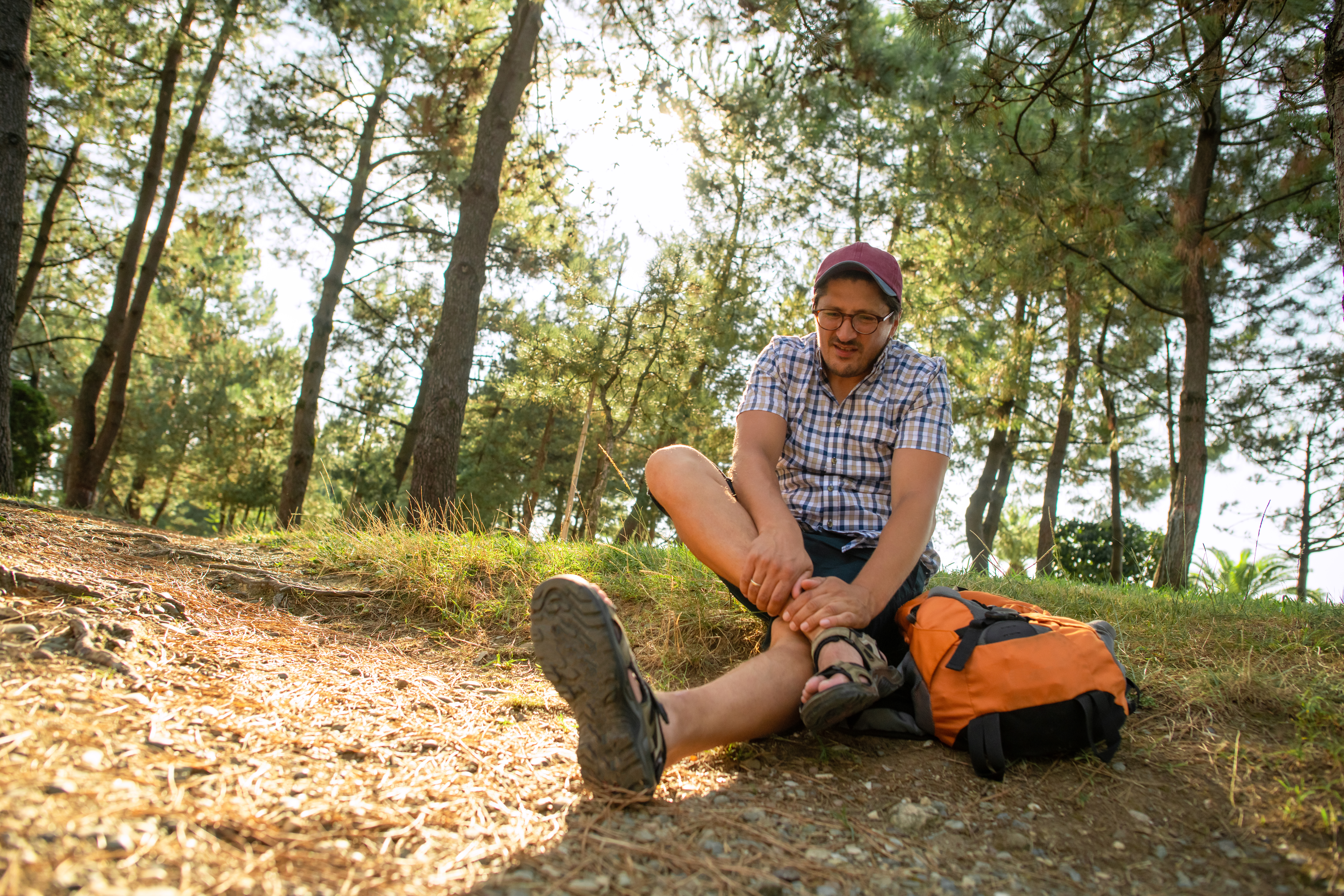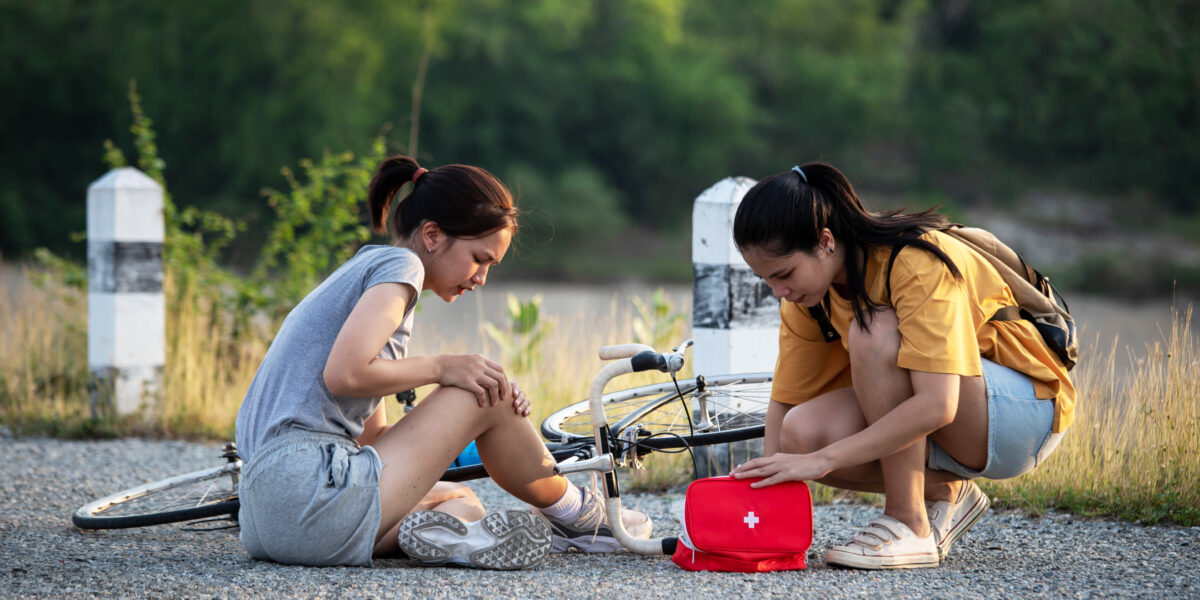Here are some tips on caring for common ailments at home, and guidance on when to seek help from your primary care provider, an urgent care center or your nearest emergency department.
For life-threatening concerns, go straight to the Emergency Room or call 9-1-1.
Insect Bites and Stings
Insect and spider bites often cause minor swelling, redness, pain and itching. These mild reactions are common. They may last from a few hours to a few days. Home treatment is often all that’s needed to relieve the symptoms of a mild reaction to common stinging or biting spiders and insects, such as fleas, flies and mosquitoes. Bites from certain insects, however, can be extremely serious and may require immediate medical attention.
Insect Bite Care Tips
- If you are bitten or stung by an insect, move away from the insect as soon as you can. Some insects, like bees, will alert their fellow insects, making them more likely to sting.
- Stay as calm and quiet as you can. Movement makes venom spread faster in the bloodstream.
- If you were stung by a bee or other insect with a spine or stinger, remove the spine or stinger as soon as you can.
- To prevent infection, clean the area:
- Wash the area with clean water 2 times a day.
- Don’t break any blisters that develop.
- Try not to scratch the bite area. Trim fingernails to prevent scratching and infection.
- If needed, apply a bandage. You may cover the area with a thin layer of petroleum jelly and a nonstick bandage. Apply more petroleum jelly and replace the bandage as needed.
- To relieve discomfort:
- Apply an ice pack to a bite or sting for 15 to 20 minutes once an hour for the first 6 hours. When you’re not using ice, keep a cool, wet cloth on the bite or sting for up to 6 hours. Always keep a cloth between your skin and the ice pack. Don’t apply ice longer than 15 to 20 minutes at a time. Don’t fall asleep with the ice on your skin.
- After the first 6 hours, if you don’t have swelling, try applying warmth to the site for comfort.
- An antihistamine taken by mouth may help relieve itching, redness and swelling.
- A spray of local anesthetic containing benzocaine may help relieve pain. If your skin reacts to the spray, stop using it.
- Hydrocortisone 1% cream or calamine lotion applied to the skin may help relieve itching and redness. Check with a provider before applying if the affected person is a child younger than age 2 or if the bite or sting is in the genital area.
- Remember that non-prescription remedies may not be safe for young children or people with certain health problems. Before you use any non-prescription medication, always carefully read the label, and follow the directions about how much to use based on age and weight. You may need to check with your provider about using these products.
Whenever you suffer from a bite or a sting, watch for signs of a skin infection. If you think you have an infection or notice any of the symptoms below, you should immediately seek medical attention.
Signs of infection can include:
- Increased pain, swelling, redness, or warmth around the bite.
- Red streaks leading from the bite.
- Pus draining from the bite.
- A fever.

Bumps and Bruises
To find your nearest ChristianaCare GoHealth Urgent Care location, visit ChristianaCare.org/Urgent-Care.
No matter how much we try to protect our bodies from physical injury, bumps and bruises will occur throughout our lifetime from childhood to becoming a senior citizen. We will bump our knees or hit our heads – reminding us once again that we are not injury-proof.
Most bumps and bruises are minor. If you sustain an injury that could cause a bump or bruise, apply firm but moderate pressure with a clean cloth or bandage. This will help stop any bleeding and will also prevent bruising (bruises form when blood collects under the skin).
Pro tip: if the bleeding hasn’t stopped after 15 minutes of pressure, or if you’re concerned about a scar, call your healthcare provider or visit your nearest ChristianaCare-GoHealth Urgent Care.
Bumps and Bruises Care Tips
- Put ice or a cold pack on the area for 10 to 20 minutes each time. Put a thin cloth between the ice and your skin.
- Take pain medicines exactly as directed.
- If you can, prop up the bruised area on pillows as much as possible for the next few days. Try to keep the bruise above the level of your heart.
Get emergency help right away if:
- You have a severe headache.
- You begin vomiting or getting sleepy following a head injury of any kind.
- You or a loved one say(s) things that don’t make sense or act out of character.
- You lose consciousness or have a seizure.
Burns
When we think of burns, multiple images may come to mind. Sunburns, cooking burns, electrical burns, etc. But how do you care for them in the moment they occur? Burns can be scary. Remain calm – these tips can help.
Sunburn Care Tips
Time in the sun inevitably brings with it red and painful skin irritation in the form of sunburn. While people with fair skin are at increased risk, sunburn can happen to anyone. A mild sunburn may cause a couple of small blisters that can be treated at home, but one that causes many deep blisters is more serious and needs to be seen by a provider for treatment.
If it’s a mild sunburn, here’s what you can do at home.
- Use cool damp compresses on sunburned areas.
- Take frequent cool showers or baths.
- Apply soothing lotions with aloe vera to sunburned areas.
- Try anti-inflammatory medicine (like ibuprofen) to reduce pain, swelling, and fever. Read and follow all instructions on the label.
- Don’t try to stop peeling after a sunburn. It’s part of the healing process. Lotion may help relieve the itching.
- Protect your skin using sunscreen, hats, and loose-fitting, tightly woven clothing.
Cooking and Electrical Burn Care Tips
We regularly treat people with burns caused by cooking or electrical devices. If it’s not serious, you can care for a cooking or electrical burn yourself. If the burn is a little redder than a sunburn, and painful with little or no blistering, home treatment should be all you need. See a doctor if the burn is dark red and looks glossy with a lot of blistering. These are signs of a deep second-degree burn.
If you have large or deep blisters and the burn is dark red and shiny, see your healthcare provider or go to the nearest ChristianaCare-GoHealth Urgent Care. Seek emergency treatment for any burn with dry, leathery skin, possibly including white, brown or black areas.
If you’ve seen a provider about the burn, follow their instructions on how to care for it. Otherwise, follow this general advice:
- Wash the burn every day with mild soap and water. Don’t use hydrogen peroxide or alcohol, which can slow healing.
- Gently pat the burn dry after you wash it.
- Apply a thin layer of antibiotic ointment or petroleum jelly on the burn.
- You may cover the burn with a nonstick bandage. There are many bandage products available. Be sure to read the product label for correct use.
- Replace the bandage as needed.
General burn tips
- Protect your burn while it is healing. Cover your burn if you are in cold weather or the sun.
- Wear long sleeves if the burn is on your hands or arms.
- Wear a hat if the burn is on your face.
- Wear socks and shoes if the burn is on your feet.
- Blisters often heal on their own.
- Do not break blisters open as it increases the chance of infection.
- If a blister breaks open by itself, blot up the liquid, and leave the skin that covered the blister. As long as the skin is not dirty or trapping pus, it protects the healing skin underneath the skin.
- Gently clean a ruptured blister with mild soap and water and loosely cover it. Put a thin layer of petroleum jelly on the bandage before you put the bandage on. This will keep it from sticking to the blister.
- If your provider prescribed antibiotics, take them as directed. Do not stop taking them just because you feel better. You need to take the full course of antibiotics.
- Take prescription pain medicines exactly as prescribed. If you are not taking prescription pain medicine, ask your provider if you can take over-the-counter pain medicine.
- If the burn itches, try not to scratch it. Instead, try an over-the-counter antihistamine. Be safe with medicines. Read and follow all instructions on the label.
Sign up to receive our monthly Health & Wellness newsletter so you can stay on top of the latest health tips, recipes, events and more!
If you have any questions or aren’t sure if your bite, bump, burn or bruise is severe enough for a visit with your provider, it’s best to err on the side of caution. Save your spot at your nearest ChristianaCare-GoHealth Urgent Care online or with your ChristianaCare primary care provider today.
Dr. Patricia “Patti” Bowyer is the associate medical director for ChristianaCare-GoHealth Urgent Care.

